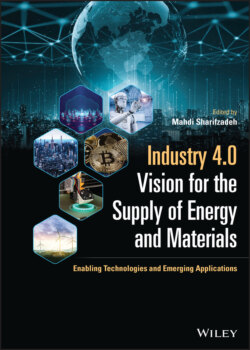Читать книгу Industry 4.0 Vision for the Supply of Energy and Materials - Группа авторов - Страница 13
1.1.1 Background
ОглавлениеThe main idea of Industry 4.0 was first adopted by Germany in 2011 as a strategic initiative that determined future advanced manufacturing for 2020 [4, 5]. Thereafter, different countries have introduced similar programs for manufacturing research and innovation; for instance, Horizon2020 proposed factories of the future (FoF) in Europe [6, 7], Industrial IoT (IIoT) was introduced in the United States by General Electric (GE) [8], and the industrial value chain initiative (IVI) was founded in Japan [9].
Industry 4.0 is defined as the integration of digitalization, intelligence, and communication technologies to industrial practices [10]. This new industrial paradigm automates work processes, optimizes products, and allows more granular customer services. Subsequently, a high level of productivity and efficiency is available to enterprises and organizations that embrace Industry 4.0 [11]. It employs innovations and disruptive developments such as IoT, CPS, big data, Fog computing, and virtual reality (VR) to accomplish this transformation. The main idea of Industry 4.0 has drawn on earlier perspectives and concepts and expanded over the years, although its landscape has been significantly altered lately [12].
